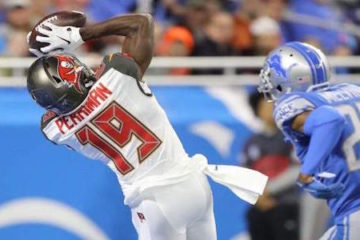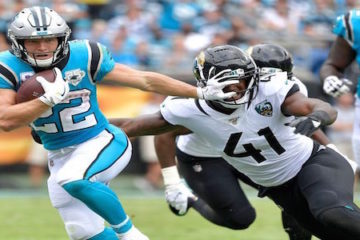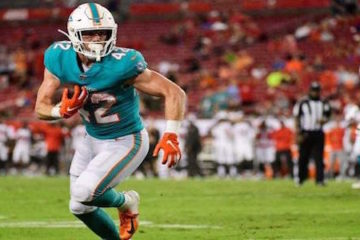2012 Fantasy Baseball, Brett Talley’s “The Rubber” Week 8: Hamels Takes Over Top Spot
Jake Arrieta (Baltimore Orioles, 8.2% owned)
Arrieta was once a very well thought of prospect. And for damn good reason. He had a sub-3.00 ERA in his time at A+ and AA and an ERA of exactly 3.00 in over 150 innings at AAA. He walked too many batters at each level of the minors and his strikeout numbers dipped at AAA, but his peripherals indicated the minor league success was for real.
But then he got to the majors. The walks continued to be a problem and his strikeout ability disappeared. His ERA was an unimpressive 4.66 in his first 100 major league innings in 2010, and his xFIP was even worse at 5.17. But in 2011 those numbers essentially flipped. His ERA was over 5.00, but his xFIP was around 4.50. The walks continued to be a problem, but he got his strikeout numbers up to league average. So at least it was a step in the right direction.
And this year he’s taken another huge leap in the right direction. His ERA is 4.72, but his xFIP is down at 3.30 thanks to another increase in strikeouts (8.30 K/9) and, more importantly, a significant decrease in walks issued. He walked well over four per nine in his first 200+ innings, but this year he’s walking just 2.11 per nine.
So the question becomes this: Is the improved control sustainable? The answer is the ever ambiguous “maybe.” When you look at Arrieta’s pitch selection this year, you notice a 13% drop in four-seam fastballs. That entire 13% has essentially been allocated to his sinker. You’ll also notice that this year’s pitch percentages are almost identical to his 2010 pitch mix when walks were an issue for him. But it’s at least possible that Arrieta has figured out how to better control his sinker. If that’s the case and he continues to limit the free passes, Arrieta is going to deliver on the promise he showed as a prospect.
Tommy Milone (Oakland Athletics, 8.4% owned)
If you’ve heard Milone discussed on a podcast or read any expert analysis on him, you undoubtedly were told that he’s a guy who’s not going to strike out many batters but who has great control. So far that analysis is dead on. Milone is striking out about five batters per nine and is walking about two. I’ve long noted the importance of WHIP given how difficult it is to find on the waiver wire. In fact, only eleven pitchers available in my ten team league have a sub-1.30 WHIP. Milone is one of them and he’s one of few I expect to stay below that mark.
In addition to his control, Milone has one other thing going for him: his home ballpark. With its spacious dimensions and ample foul territory, the Oakland Coliseum has long been suppressing pitcher numbers. And so far it has been a major factor in Milone’s success. Milone has allowed just two earned runs in 30 innings pitched at home. He has yet to allow a homer there and the BABIP against him is just .184. Obviously he won’t continue to have that level of success at home, but you can expect the park to keep his BABIP and home run numbers lower than league average.
Milone faces the Yankees at home on Sunday so maybe you think about passing on him this time, but anytime the kid pitches in Oakland you have to consider him for a spot start.
The Top 60
1. Cole Hamels (Philadelphia Phillies, 100% owned)
Roy Halladay’s K/9 between 2008 and 2010 sat in the upper sevens. Last year it spiked to eight-and-a-half thanks to a jump in swinging strike rate. But his swinging strike rate and K/9 have returned to normal so far this year, and his normal strikeout ability isn’t too far above average. He’s still great, just maybe no longer worthy of the #1 ranking he’s held in this article for quite some time. Cliff Lee has pitched quite well, but he’s battled some injury issues early.
But even though neither of those veterans continues to top the list, a Phillie still does. Hamels is truly an elite pitcher. Of the usual studs you see leading this list, Hamels is the only one doing it without a major red flag somewhere in his numbers. We’ve covered why his fellow Phillies are cause for concern, but other guys have extremely low BABIPs (Verlander, Kershaw), walk a few too many to have the top spot (CC, Price, Felix, Shields), or have an unsustainably low HR/FB rate (Greinke).
Hamels’ strand rate (82%) is definitely higher than the league norm (72%), but it’s not so much higher than his career norm (77%). He could definitely get hit with a touch of regression there, but it’s not anything I’d be too concerned about. Instead, I’ll trust the guy with the fifth best K/BB (5.80), fifth best xFIP (2.86), and third best swinging strike rate (13%).
2. Justin Verlander (Detroit Tigers, 100% owned)
3. Clayton Kershaw (Los Angeles Dodgers, 100% owned)
4. Zack Greinke (Milwaukee Brewers, 100% owned)
5. Roy Halladay (Philadelphia Phillies, 100% owned)
6. Cliff Lee (Philadelphia Phillies, 100% owned)
7. CC Sabathia (New York Yankees, 100% owned)
8. Anibal Sanchez (Miami Marlins, 100% owned)
9. David Price (Tampa Bay Rays, 100% owned)
10. Felix Hernandez (Seattle Mariners, 100% owned)
11. James Shields (Tampa Bay Rays, 100% owned)
12. Jered Weaver (Los Angeles Angels, 100% owned)
13. Matt Cain (San Francisco Giants, 100% owned)
14. Stephen Strasburg (Washington Nationals, 100% owned)
15. Jordan Zimmermann Washington Nationals, 100% owned)
16. Adam Wainwright (St. Louis Cardinals, 97.7% owned)
17. Dan Haren (Los Angeles Angels, 100% owned)
18. Tim Lincecum (San Francisco Giants, 100% owned)
19. Matt Garza (Chicago Cubs, 100% owned)
20. C.J. Wilson (Los Angeles Angels, 100% owned)
21. Bud Norris (Houston Astros, 94% owned)
Norris has a league best ERA of 0.35 so far in May. Such a pace is obviously unsustainable as his BABIP for the month is .226 and his strand rate is an insane 97.4% (which is how you allow only one earned run and have an ERA of 0.35). But the good luck in May basically just made up for Bud’s bad luck in April where his BABIP was .330 and his strand rate was 68%. This is an excellent example of how things tend to regress to the mean sooner rather than later.
When you even out all the good and bad luck you get a guy with an xFIP that is close to his ERA and with a BABIP and strand rate that are only slightly on the lucky side of things. If his luck self corrects to his detriment this time, it will only be a minor correction. As long as his luck remains mostly neutral, Norris is capable of giving you an ERA in the mid-3.00’s with a strikeout-to-walk ratio of about three.
22. Yu Darvish (Texas Rangers, 100% owned)
23. Josh Johnson (Miami Marlins, 99.5% owned)
24. Madison Bumgarner (San Francisco Giants, 100% owned)
25. Brandon Beachy (Atlanta Braves, 100% owned)
26. Max Scherzer (Detroit Tigers, 81.9% owned)
27. Gio Gonzalez (Washington Nationals, 100% owned)
28. Jeff Samardzija (Chicago Cubs, 96.5% owned)
29. Shaun Marcum (Milwaukee Brewers, 100% owned)
30. Ian Kennedy (Arizona Diamondbacks, 100% owned)
31. Tommy Hanson (Atlanta Braves, 100% owned)
32. Jake Peavy (Chicago White Sox, 100% owned)
33. Yovani Gallardo (Milwaukee Brewers, 100% owned)
34. Mat Latos (Cincinnati Reds, 92.9% owned)
35. Jaime Garcia (St. Louis Cardinals, 94.9% owned)
36. Doug Fister (Detroit Tigers, 96.7% owned)
37. Josh Beckett (Boston Red Sox, 98.1% owned)
38. Ryan Dempster (Chicago Cubs, 98.2% owned)
39. Edwin Jackson (Washington Nationals, 62.6% owned)
40. Lance Lynn (St. Louis Cardinals, 100% owned)
41. Jonathon Niese (New York Mets, 14.9% owned)
42. Colby Lewis (Texas Rangers, 100% owned)
43. Wandy Rodriguez (Houston Astros, 100% owned)
44. Brandon Morrow (Toronto Blue Jays, 100% owned)
45. Derek Holland (Texas Rangers, 67.9% owned)
46. Jon Lester (Boston Red Sox, 100% owned)
Everyone may not have figured this out yet, but Lester is no longer the elite pitcher her was in 2009/2010. He’s lost a little off his fastball since then, and it has caused his swinging strike rate and his K/9 to drop. His K/9 is all the way down below 6.00 right now, and his swinging strike rate is under 8%. Those are below-average numbers. There seems to be some room for them to rebound given that his velocity has held steady with last year, but you have to realize he’s no longer an elite option. If he bounces back, it won’t be all the way to the top. If someone in your league still thinks that’s a possibility, deal him now.
47. Johnny Cueto (Cincinnati Reds, 100% owned)
48. Jeremy Hellickson (Tampa Bay Rays, 100% owned)
49. Mike Minor (Atlanta Braves, 36% owned)
50. Dillon Gee (New York Mets, 1.1% owned)
51. Jason Hammel (Baltimore Orioles, 79% owned)
52. Chris Capuano (San Diego Padres, 100% owned)
53. James McDonald (Pittsburgh Pirates, 90.4% owned)
54. Anthony Bass (San Diego Padres, 19.9% owned)
55. Johan Santana (New York Mets, 100% owned)
56. Joe Blanton (Philadelphia Phillies, 20.4% owned)
57. Gavin Floyd (Chicago White Sox, 82.6% owned)
58. A.J. Burnett (Pittsburgh Pirates, 7.2% owned)
59. Ricky Romero (Toronto Blue Jays, 100% owned)
60. Matt Moore (Tampa Bay Rays, 83.7% owned)
It is entirely possible that I’m entirely too low on this duo, but I just can’t find much to like about either.
In the 600+ innings we saw out of Romero to start his career, it looked pretty clear that he had slightly above average strikeout abilities and only average control while keeping the ball on the ground at a well above average rate. According to xFIP and SIERA, that combination of skills was good for a pitcher with an ERA in the high 3.00’s with a WHIP just under 1.30. But then Romero got some good BABIP and strand rate luck in 2011 which led to him being drafted among the top 100 players in most ESPN.com drafts.
But so far this season Romero’s previous strikeout-to-walk abilities have left him. His swinging strike rate has dipped and his K/9 has dipped below average along with it. His BB/9 has ballooned all the way up to 4.55. But thanks to continued BABIP luck (.240 this year), Romero’s ERA is only at 3.64. It’s entirely possible that he regains some of his previous strikeout and control abilities, but if his luck runs out before that happens, he could be a disaster.
And Moore, like so many before him, has not been able to immediately adjust to the big leagues. His main issue has been finding the plate. His control has simply left him at times this year, and, until he figures out how to throw strikes consistently, he’s likely to continue to struggle. The strikeout stuff is still there as he’s generating a lot of swings and misses. But until he can give batters more to swing and miss at, he’s not much better than a stream option.
Written by Brett Talley exclusively for thefantasyfix.com. Brett is a soon-to-be attorney in Dallas who is studying for the bar everyday of the zzzzzzzzzzzzzzzzzzzzzzzzz. You can follow him and/or ask him for fantasy advice on Twitter @therealTAL.






